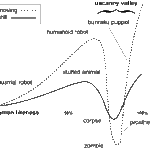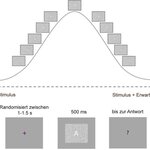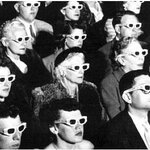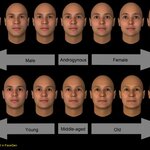Vision

The authors of a new study in Nature Neuroscience studied mechanisms used by the brain to store information for a short period of time. The cells of several neural circuits store information by maintaining a persistent level of activity; a short-lived stimulus triggers the activity of neurons, and this activity is then maintained for several seconds. The mechanisms of this information storage phenomenon occurs in very many areas of the brain.The researchers investigated the persistent activity in a hindbrain circuit responsible for eye movements in zebrafish larvae. This so-called oculomotor…

Diseases such as retinitis pigmentosa (RP) and age-related macular degeneration (AMD) are the leading causes of incurable blindness in the western world. In these diseases, retinal cells (photoreceptors) begin to die and limit the eye's ability to capture light and transmit information to the brain. Retinal cells, like other cells of the central nervous system, have limited capacity for endogenous regeneration.
Now scientists say they can regenerate large areas of damaged retinas and improve visual function using IPS cells (induced pluripotent stem cells) derived from skin. …

In 1970, Japanese roboticist Masahiro Mori described what he called the "uncanny valley", which was a graph showing our affinity for a machine to its likeness of humans. As robots look and act more human-like, our fondness for them increases, but when machines reach a point where they look so much like us that we can barely tell they're different, we feel repulsed instead of affectionate.
31 years later, we're still in that uncanny valley but the Advanced Telecommunications Research Institute in Japan is not giving up. These are the guys who brought us Japanese…

A new study of the eyes of fossil animals in Science overturns the conventional wisdom that dinosaurs were active by day while early mammals moved at night. Instead, dinosaurs like velociraptor hunted by night while the big plant-eaters browsed around the clock.
Ryosuke Motani, professor of geology at UC Davis, and Lars Schmitz, a postdoctoral researcher in the Department of Evolution and Ecology, were able to work out the daily habits of dinosaurs using eyes because dinosaurs, lizards and birds all have a bony ring called the "scleral ring” in their eye, a structure that is…

The human brain works incredibly fast but visual impressions are so complex that their processing takes up to several hundred milliseconds before they enter our consciousness.
Researchers say they know why this delay may vary in length; if you already know what you are about to see, you recognize it faster.
When the brain possesses some prior information, such as when it already knows what it is about to see, conscious recognition occurs faster. There has been some debate about whether or not the processes leading up to conscious perception were more rigid and if their…

Wrestlers are taught to ignore an opponent's eyes and instead watch his waist - nothing much is happening that his waist won't be involved in whereas eyes can be misleading. That means wrestlers are conservatives, according to new research coming out in Attention, Perception&Psychophysics.
Progressives follow eye movements more than conservatives, the authors contend. That means that progressives (also, liberals, if you don't know what the word liberal means) and conservatives quite literally do not see the world in the same way. The researchers measured…

Scientists writing in Cognition have said that our ability to recognize and remember faces peaks at ages 30 to 34 - a decade later than most of our other mental abilities.
Some prior studies had suggested that face recognition might be slow to mature but fewer suspected that facial recognition might continue building for so many years into adulthood. The late-blooming nature of face recognition may simply be a case of practice making perfect.The researchers used the web-based Cambridge Face Memory Test to test recognition of computer-generated faces among some 44,000 volunteers ages 10…

Many of the films we love manage to put us in someone else’s shoes, whether it be the shoes of a social network tycoon or a zombie killer. After all, we don’t pay $15 to see on screen what we do all day. Writers and directors get us into the protagonist’s head in a variety of ways, including letting us hear his or her inner thoughts.
But a more direct route into the shoes of the protagonist is to make it appear as if the viewer is actually in the body of the protagonist. That sounds simple enough: film from the protagonist’s vantage point and have the actors pretend that the camera is the…

Neuroscientists have discovered that the brain sees some faces as male when they appear in one area of a person's field of view, but female when they appear in a different location, a finding which challenges the longstanding tenet of neuroscience that how the brain sees an object should not depend on where the object is located relative to the observer.
In the real world, the brain's inconsistency in assigning gender to faces isn't noticeable because there are so many other clues, like hair and clothing, but when people view computer-generated faces, stripped of all other gender-identifying…
The eye is not just a lens that takes pictures and converts them into electrical signals, it is the first part of an elaborate system that leads to "seeing". As with all vertebrates, nerve cells in the human eye separate an image into different image channels once it has been projected onto the retina and pre-sorted information is then transmitted to the brain as parallel image sequences.
Perception by the brain is another matter. For many animal species, "seeing" is one of the most important senses because every second the eyes record a huge number of impressions which…